


The Witcher 3: Wild Hunt, one of E3’s most anticipated titles, is the final installment of CD Projekt Red’s award-winning The Witcher RPG series. The first two games are renowned for their gripping storytelling, and this appears to remain true for their successor.
“The most important part of The Witcher 3 is the story,” says CD Projekt Red’s environmental designer, Jonas Mattsson, as we sit in a dark room awaiting the 45 minute long hands-off game play demo. “We are creating a branching storyline that gives true consequences to decisions.”
Our adventure with The Witcher, Geralt, begins on the largest island of the Skellige archipelago. Larger than the entirety of The Witcher 2, this northern isle is heavily influenced by Norse and Celtic mythology, an influence seen in the environment and architecture of the world. Astride his gray steed, Geralt gallops to a nearby city in search for information about the Wild Hunt, an enigmatic group of spectral warriors. He passes through a vibrant and lush environment that appears to go for miles past the horizon.
Once in the city, we find information on the location of the Wild Hunt and are off once more into the open world, one of The Witcher 3’s most ambitious and significant additions. “It’s not about the size,” says Mattsson, “It’s about the quality and intensity of it… the game delivers over 100 hours of emotionally charged game play and a huge diversity of visually stunning landscape, smoothly blending to create a coherent open world experience.”
After traversing through a small town, we eventually find Geralt putting on his sea legs as he readies a small sailboat to take out into the bay. It is here that we can truly see the vastness of the game – surrounded by vistas and mountains, we are free to sail wherever we see water. That is, we are free to sail unless a storm breezes in. The Witcher 3 offers dynamic weather that heavily affects both the environment and characters within the game. Because the weather is currently pleasant, we see a large raiding party leaving the city in a Viking ship. However, as soon as the storm clouds begin to pick up, we are advised to return to port, or risk sinking in open water. If the weather had been bad for a few hours prior, the raiding party would probably be found in a tavern socializing instead of out at sea. In this respect, the game creates a completely reactive universe with seamless environmental and NPC interactivity. NPCs have their very own schedules and lives; they interact with each other without the presence or interaction of Geralt. It is later noted that even beasts are affected by the dynamic weather, which holds sway over their weaknesses and strengths.
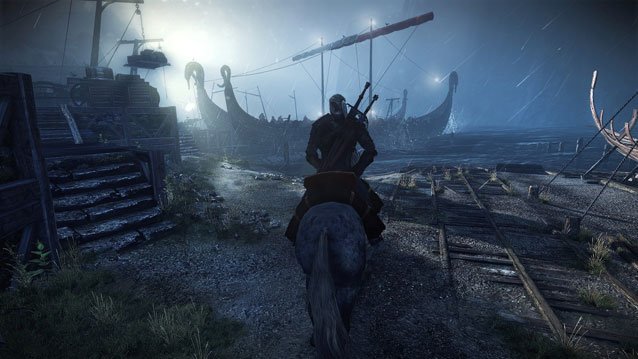
As the clouds approach Geralt’s ship, we fast travel to a different location using the game’s map and are instantaneously surrounded by a plethora of things to explore. Calling our horse with a whistle command, we are off once more into the wilds to find a town called Fairland. On the way, we pass houses and homesteads, farms and forests; we are exposed to a living and breathing world. Wildlife is aplenty, and as part of the overall eco-system of the game, it can all be hunted, skinned, and sold. And what would an open world video game be without bandits and beasts?
Enroute, Geralt stumbles across some bandits, attacking a small cabin on the road. He defeats his foes with ease, transitioning effortlessly between melee combat and magic signs. The owner of the cabin hesitantly thanks Geralt, and Mattsson explains to us that, despite the small size of this event, the defeat of the bandits could have dire repercussions on the overall game later on. It is obvious that in The Witcher 3, consequence accompanies almost every decision made.
Further down the path, Geralt comes across some ancient ruins that blend beautifully into the landscape. Appearing to be thousands of years old, the ruins are home to ancient plants that have recaptured the land, as well as a beast known as a Fiend – a monster that appears to be a terrifying hybrid between a werewolf and elk. The battle with the Fiend plays out like a mini-boss fight, which is fitting, as The Witcher 3 will not have any actual end-game bosses. Enjoying combat in closed spaces, the Fiend has a special ram attack which is intelligently combined with a spell that enshrouds Geralt in darkness, making this foe extremely difficult to see and dangerous in closed quarters. After a challenging and strategic fight, Geralt defeats the beast and, following some much needed rest and meditation by a camp fire, he makes his way to Fairland.
When in Fairland, Geralt encounters a civil dispute between the citizens over the death of a man who was killed by what the village calls “the forest spirit.” The elders of the village believe that the forest spirit is simply angered by a lack of traditional sacrifices; while the younger citizens under the leadership of a man named Sven, say that the forest spirit is actually a beast that mercilessly killing the town’s people. This dispute begins a side-quest in which we can choose what Geralt does. Will he help the elders and make the necessary sacrifices to appease the spirit? Or, will he kill the beast and rid the town of needless killings? There is no certainty behind this type of decision making, as from Geralt’s perspective both sides have a valid argument. For the sake of this demo, we decided to have Geralt track and take down the spirit (or beast) in attempt to help save the village people.
As we search through the forest for tracks to help us identify the beast, we can see where The Witcher 3 shines. The dynamic weather brings in a storm with strong winds that blow through bushes and trees in the most realistic manner I have ever seen—each heavily detailed plant reacts to the directional changes in the wind, the leaves gain a glossy texture as rain begins to fall, and the forest brightens and then returns to darkness as lightning strikes in the distance.

Once we have analyzed enough of the beast’s tracks with witcher sense, we pull-up the bestiary in the main menu and identify the beast. The bestiary contains information on the dozens of beasts Geralt encounters in the world, and explains their fighting strategy and weaknesses. In our research we find that the forest spirit is actually an ancient beast known as a Lechen. What began as a simple hunt-and-kill quest suddenly becomes layered with moral complexity, as we learn that the Lechen can only be permanently defeated if the person it chooses as its “link” is banished or killed as well. After investigating the village using witcher sense, we identify the link to the Lechen as Hilda, Sven’s girlfriend. Obviously, this proves to be problematic; however, after talking with Sven we learn that he is willing to do anything to kill the beast, even kill the woman he loves. We are given the option to advise against killing Hilda, but Geralt decides that the drama of the town is none of his business. As the villagers prepare to kill Hilda, Geralt returns to the wilds to hunt the Lechen.
At this point in time the storms have passed and the moonlight shimmers through the tree limbs, giving the forest an eerie glow. After destroying the Lechen’s shielding totems, we are finally able to face the Lechen itself. A hauntingly beautiful beast with a deer skull as a head and tree-like limbs, it towers over Geralt, attacking with roots from the earth and transforming into a flock of ravens to dodge attacks. Geralt eventually bests the foe and takes the beast’s head back to Fairland as proof of the deed. However, rather than finding gracious villagers, he stumbles upon a massacre. Sven and his men not only killed Hilda, but also all of the village elders as well. It turns out he didn’t want to save the village, he wanted to have complete power over it. The screen then flashes to a cut-scene that, in the finished game, will actually occur later on in the main story. In the scene, we learn that under Sven’s leadership, the village was eventually destroyed by poor politics and incessant bandit raids; all of this the result of a single side-quest. On that gloomy note but awe-inspiring note, the hands-off demo was over -- what was a 45 minute presentation ended up feeling like five seconds, leaving me craving more content.
After watching the hands-off demo for The Witcher 3, it becomes obvious as to why it is such a highly anticipated title. Side-quests and fantastic writing merge flawlessly into the main narrative of the game, displaying the stress behind decisions, uncertainty, and consequences. Reactive and organic combat keep the player on their toes. The dynamic environment and open world create a visually stunning and living world in which NPCs live and interact with or without the interactions of Geralt. CD Projekt Red is not joking around then they say The Witcher 3 is an open world game, and it is a world they created with little to no sacrifices in terms of staying true to their roots.
To get a grasp of the overall scope of the game, the island we were exploring during the demo is larger than the entirety of The Witcher 2. It is also important to note that The Witcher 3 relies on a new technology known as the Red Engine 3, which allows the game to have a completely open and dynamic world free of any loading time.

After the demo, Robyn and I had the pleasure of sitting down with CD Projekt Red’s Environmental Desginer, Jonas Mattsson. In our interview, we chat about the game’s overall narrative and environmental design, creative inspirations, combat, and those dangerous pointy things in caves.
KATY: I feel like many of the demos on the show floor that only allow us to get ten minutes of game time don’t really let us get a sense of the overall game. That was not the case with the demo for The Witcher 3.
JONAS: With the demo, we really wanted to work on giving context to what [The Witcher] is all about. You know, an RPG game, you can’t just go, “Here is the fighting system, get out and read the fact sheet…” You can’t do that. You have to bring the story in a bit.
KATY: How would you describe The Witcher 3 to an audience who is not very familiar with the series?
JONAS: It’s low fantasy, so it’s not like the Lord of the Rings. People who are familiar with Game of Thrones will be very comfortable with this. It is closer to reality, just with a bit of super natural stuff added to it. You’re basically a mutated and trained from birth monster-hunter named Geralt, and you hunt monsters for gold. You are despised by people, but they need you. You’re not really human, but you’re not really your own race; you’re an outcast. In The Witcher 3, you are on a personal journey. In the previous games, Geralt lost his memory, but now he has regained it and is looking for his loved ones while tracking down this mysterious dark force called the Wild Hunt.
KATY: The loss and regaining of memory… is that why it’s okay for people to come into the game who have not played the previous titles?
JONAS: Exactly, because it is all about him finding his loved ones; that is what it boils down to.
ROBYN: So, the game went from having a cult following with the first one, to being one of the most anticipated releases with The Witcher 3. I have two questions from that. What will old fans of the series find that is familiar and nostalgic for them? Also, how does it feel to suddenly go from having a cult following to having major fans?
JONAS: While we are trying to make sure that new comers can enjoy the game, there will definitely be lots of stuff for people who played the previous titles – like reappearing characters. It’s like saying, “I will give you the story, but there is a whole back story to it that will be enriched by all of the characters that will come back and central details.” There is also a saving port for PC, so if you made certain choices in The Witcher 2, they can carry over to the PC version. We want to cater to new comers – we don’t want to go, “Oh, you have to play both The Witcher and The Witcher 2,” we want to go “This is Witcher 3, and you can fully enjoy it.”
ROBYN: You mentioned that our decisions of the previous games will port over. How will that influence the story line of The Witcher 3?
JONAS: Well I don’t want to spoil too much, but certain characters will definitely be affected by actions, that is as much as I can tease. Also, to go back to the question I forgot to answer about the hype.
ROBYN: Oh yes, how does it feel to suddenly go from having a cult following to having major fans?
JONAS: Well, while we were working on this presentation and the game, sometimes you get a narrow vision. You know, you go into the office and you try to make something awesome but you’re not really sure how people will react to it. We are perfectionists. Like for the tree in the castle scene, we would go, “That tree, NO! Rotate it like this. NO! Rotate it like that. No. Rotate it like this!”
*Everyone laughs
I’m not kidding, it’s true! And it’s like, “Oh people, oh the composition with the camera, no!” It [the popularity of the title] has been overwhelming for us and really a big boost for the team because we are so down to the details. We really want to make it right and we’re extremely happy about it.
KATY: It definitely shows with the demo.
JONAS: Thank you. Thank you so much. It really works.
ROBYN: I really liked the scenic vistas. We could just look out and get the scope and feel of how large the world is.
JONAS: This is exactly how we feel with the environment team. We were trying to create this feeling of epicness. We take a lot of inspiration from films to work with tones and color – and also looked at pictures from Scotland to see details, like how a ruin connects to the landscape. Because you can create a landscape with ruin, but it can look not correct. You have to make it sit right and have to ask “Would they build it like this?” You have to apply logic to a fantasy game. (laughs) It’s really hard sometimes.
KATY: So this project is far more ambitious than the previous Witcher titles in that it is completely open world. What inspirations did you take for this open environment? Was Skyrim influential at all?
JONAS: I am a fan of Skyim, a lot of us love Skyim. But while they are doing their thing, like open world, jumping and playing around quite casually, we are doing it a little bit differently. We are heavily story driven and open world. This hasn’t really been done before and we want to prove that it can be done. So definitely there are inspirations. For example, Novigrad -- it is inspired by medieval Amsterdam, but it is like the metropolitan of the north; it is enormous. It’s in the trailer, a short clip when you are walking through it. There is a different type of conflict there, it’s more political intrigue, clock and dagger, you know. It’s rich, vibrant, and colorful, but also very corrupt.
*he points to piece of detailed concept art
This is the surrounding farm-land area. So here you have rolling hills and stuff like that – it is all very different. You also have “No Man’s Land,” which is the swamp area from the CGI trailer. It has much more influence from The Witcher 1 because it is all Slavic inspired; it’s dangerous around every corner with witches curses, etc. So we offer players lots of variety. Also, that community, if you noticed, had a north Irish accent. It’s very important for us that they have different regional accents of people to show the authenticity of the game.
KATY: Were there any consequences or sacrifices for making the game open world?
JONAS: Now the tricky part for the environment art was -- how do you bring the intensity and quality of The Witcher 2 into an open world? And for us, it was not about making compromises; it was about having better tools. So for instance, say we create a mountain… now if we want to make a forest, we have a forest tool that calculates procedurally where it would rain, where the water would gather, and where the forest would grow out of that.
KATY: That is awesome!
JONAS: So you would say, “I want these small trees, these larger trees, and some bushes,” and you just go “generate” and it goes BOOM. It has natural forest clearings and slopes, and then we go in and start handcrafting the paths and stuff, making it really unique. When you turn the corner the sun comes in through the trees; you saw in the forest how the light hits you at different angles. We really want to create those wild moments that are epic.
KATY: And the way the weather works in the game, with the wind interacting with the entire environment. That was incredible.
ROBYN: And the sun beams coming through the clouds!
JONAS: Our technical artists are like, half programmers and half artists. They work wonders.
ROBYN: So you mentioned you took inspiration for the environment from films. I’m intrigued to hear what films in particular inspired the game.
JONAS: In terms of scenery and stuff… it’s going to sound funny, but Snow White. There is this scene at the end of the film that is a battle on a beach; it is rocky and high and feels like it is real. Robin Hood, the one with Russell Crowe, we looked at a lot of that, like the homesteads and the castles. Brave Heart, actually as well, the castle interiors and exteriors, and the tone. In our office we made a huge poster with tones of color and screen shots of different films like Game of Thrones; we know what kind of tones we want. Composition and color is very important for us, to get the tone right. It adds to the cinematic experience.
KATY: Another thing I thought was rather unique in the demo was the combat. It’s not just traditional RPG combat. There is a lot more strategy involved and it’s very smooth; it’s very much like an action game.
JONAS: Exactly.
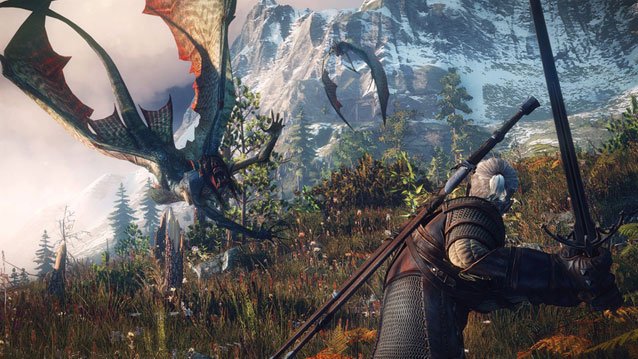
KATY: So what were the challenges of making the combat more action-based while maintaining the feel of an RPG?
JONAS: Well, in The Witcher 2 we had 20 action sequences, like cut and roll. In The Witcher 3, we have over 96. So basically when you are cutting, you can change your mind and start using a sign. It’s much more organic and fluid. We have that as the action heart of it. But also you can use signs (magic spells), you can set traps, you can use magic to shield yourself, you can tame animals with it, or calm enemies – so you have quick tactics. But then you can go deeper with effects; you can oil your sword with different poisons. It adds all of these layers depending on how you want to play it, and there is also all of the customization of armor and stuff. So it’s really up to the player, however he or she wants to play it.
KATY: I loved the fight with the Fiend, as he seemed to have very unique abilities. Does each beast in the game have a unique way of fighting?
JONAS: Oh yeah, unique special attacks and unique tracts. So, you come across something in a valley and you say, “Oh, here is one set of tracts. There is one set of tracts. I think I know these tracts and I know what kind of monster walked here.”
KATY: And that way you can address your combat strategy based on the monster?
JONAS: Exactly. You know how to prepare. Now in the demo, we weren’t really preparing for that fight [with the Fiend]. If we oiled our sword we would be better prepared and we would have killed it much quicker. However, we stumbled upon it and it was a little bit harder to lure it out, because it uses its environment against us. For instance, we have an ice giant in our game. It prefers caves, and uses the cave against us. You know stalactites? Or stalagmites? The pointy things!
KATY: The pointy things that are dangerous. (laughs)
ROBYN: Stalagmites? I think it depends on which way they go.
*everyone laughs
JONAS: The pointy things in the ceiling (laughs). He will try to stomp on the ground and bring them down, bringing the roof down on you. However, when put in a forest he will tear out trees and use them against you. So our enemies use the environment against us. Of course, the Lechen is more of a forest dwelling monster, so you won’t find it running out in the open. Certain monsters prefer certain types of environments.
KATY: The creatures in the game all appear to be very detailed. Was there any inspiration behind the design of the different beasts?
JONAS: Well, for example, the Fiend is called Bies in Polish, which means devil. It is inspired by this myth of this monster in the wild. This is really weird because I’m not from Poland, I’m from Sweden, but Poland has the myth that says, “a hunter who hunts on a Sunday and gets killed, gets cursed into a beast,” something like the Fiend. It all comes from Slavic mythology… we draw a lot of inspiration from this kind of thing.
ROBYN: You mentioned that these monsters will be using their environment against us – with the Fiend we also saw the environment used against them when it got its antlers stuck in the wall. What other ways will we be able to use the environment against the monsters?
JONAS: The Fiend, as an example, prefers to fight in a closed-in space so it can ram at you, put you in a corner, and kill you. But if you lure it into the open, it is much more vulnerable. You can go around it and use the open space against it. Wolves, not a monster, but part of the eco-system, will try and circle you… so again, using open space. It is all much more tactical; you can’t just go in a hack and slash.
KATY: It’s refreshing to see that sort of combat in an ambitious project like this. I have also heard rumors about mounted combat…. will that be included in the game at all?
JONAS: Well, we thought about it – but Geralt isn’t really a mounted character. We are still exploring the possibility, but we are thinking of minor things, like casting signs. But, as you saw in the trailer, he can dismount enemies as well, so there is some.
ROBYN: I have to ask about my favorite red-headed character…
JONAS: Trish? If she makes a reappearance?
ROBYN: Yes…
JONAS: I don’t want to spoil anything. Okay… Geralt is looking for his loved ones.
KATY: Hint, hint. (laughs)
JONAS: She might be included.
KATY: Oh, one more thing. I found the side-quest we saw in the demo to be very unique in how it so flawlessly merges with the main story.
JONAS: Side-quests often affect the main storyline. Like I said, sometimes side quests can be obviously a side-quest.
KATY: Exactly. Go find fifty of these things and then do this.
JONAS: Exactly. We don’t have FedEx quests. It’s terrible to have that, and we want to have a more organic feel.
KATY: We saw that in the ending of that particular side-quest; it was rather tragic. Will a lot of the side-quests have varying impacts like that, based on choice?
JONAS: More or less, yes. Like that quest, it could have ended very differently. For instance, if we spoke with the village elder and made sacrifices to the monster with wolf hearts to please it, which in turn would satisfy it [the Lechen’s] hunger, then the village would continue to train warriors and therefore be saved. It is unpredictable; you don’t know the consequences of anything.
ROBYN: What if you had asked them to exile Hilda? I saw that was an option.
JONAS: They would exile her. The village would still be there. But you know, when you go with the village elder and do the wolf heart sacrifice, you come back and Sven becomes angry and tries to kill you and the elders. He wants to have control of the village.
And also, when we say one hundred hours of game play, we don’t mean re-playability. We mean that your choices on the storyline are fifty hours and then we have an additional fifty hours of exploring and side-quests. We want to make people want to replay if differently.
---
CD Projekt Red’s The Witcher 3 is going to unquestionably define next generation RPGs and is set to be released in 2014 on PC, Playstation 4, and Xbox One.
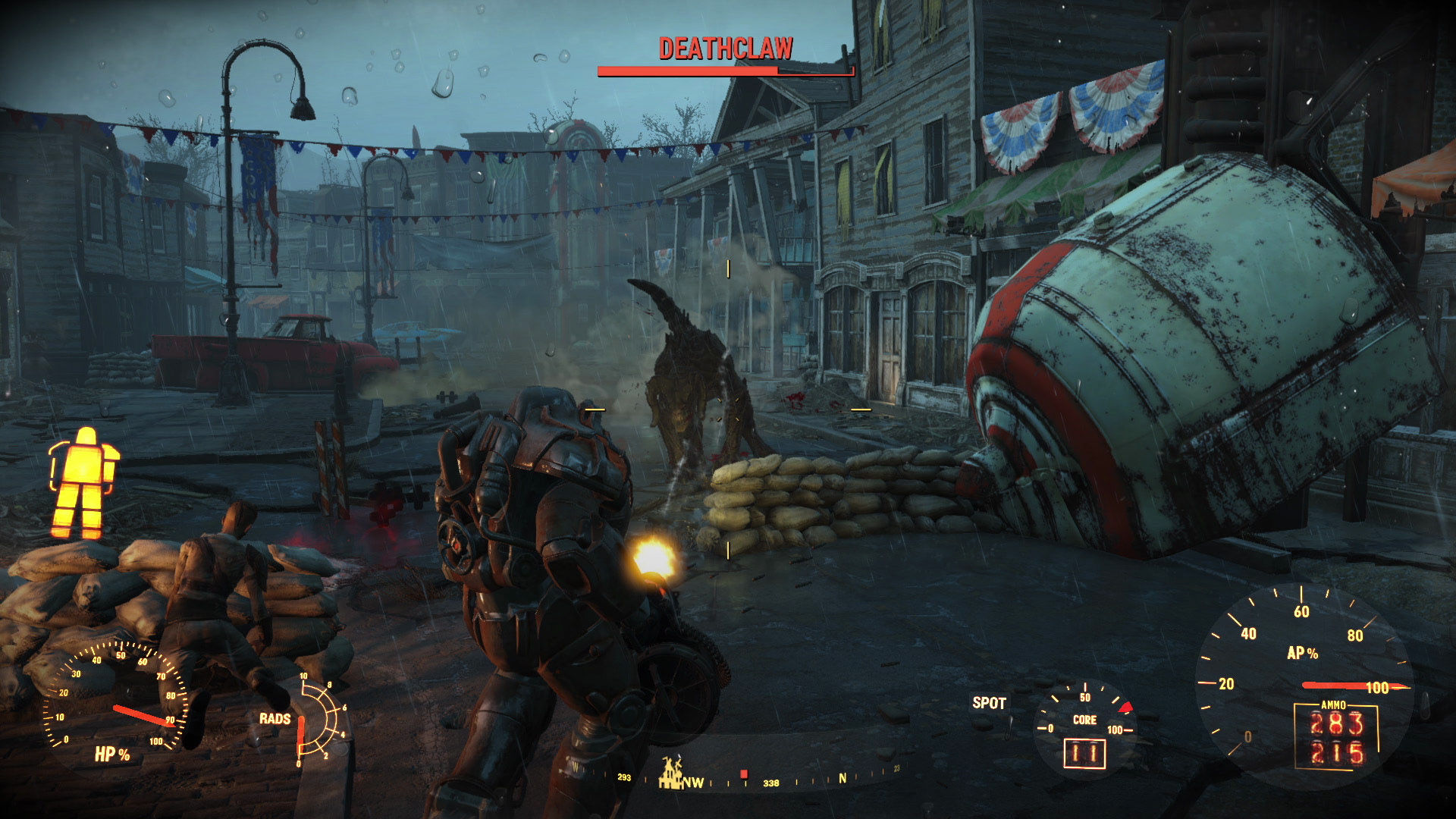


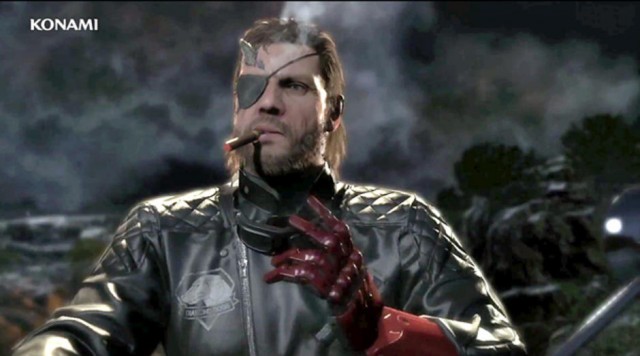
 Dark Souls 2 HD: PS4 vs PS3 Graphics Gameplay Comparison
Dark Souls 2 HD: PS4 vs PS3 Graphics Gameplay Comparison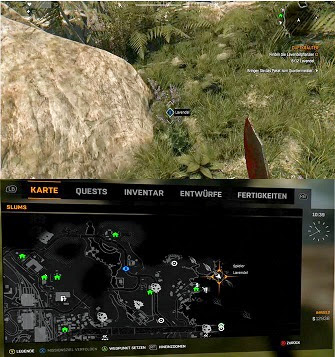 Dying Light (PC) collectibles / quests
Dying Light (PC) collectibles / quests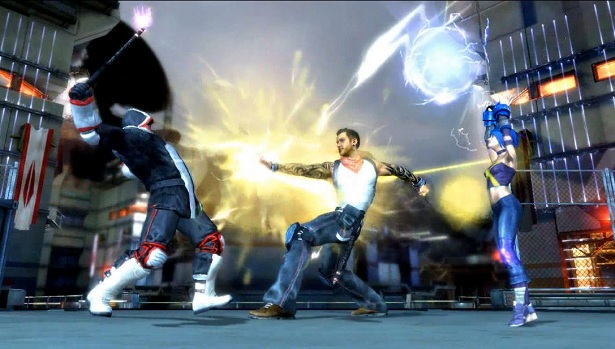 X-Men: Destiny Walkthrough
X-Men: Destiny Walkthrough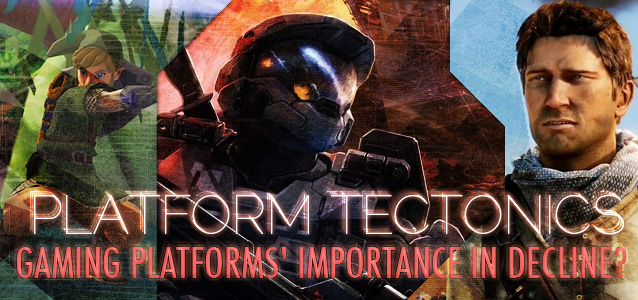 Platform Tectonics: Gaming Platforms Importance in Decline?
Platform Tectonics: Gaming Platforms Importance in Decline? Super Smash Bros Wii U: Advanced Greninja Combo Guide
Super Smash Bros Wii U: Advanced Greninja Combo Guide